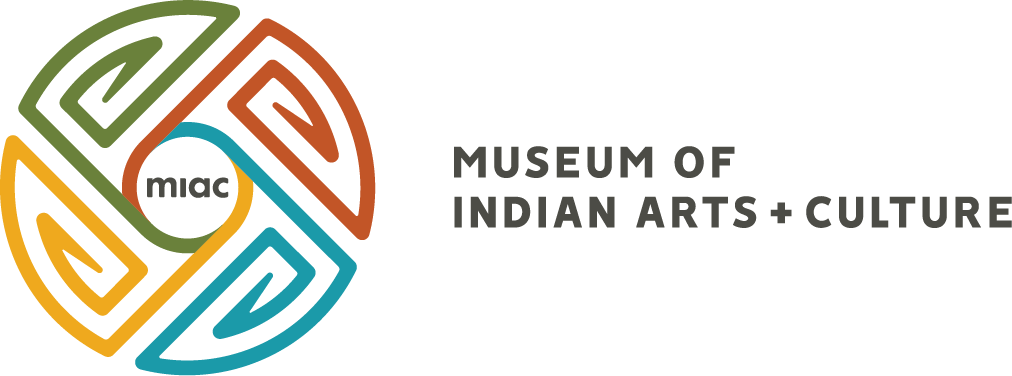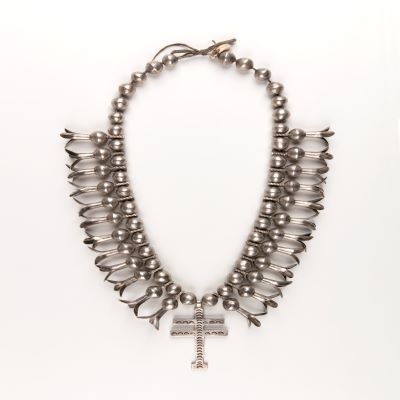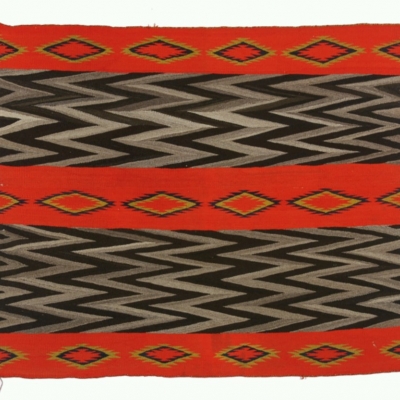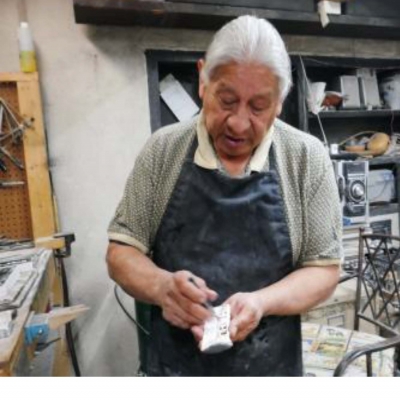Past Exhibitions
Oblique Views: Archaeology, Photography, and Time
October 25, 2015 through May 7, 2017
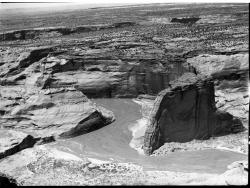
White House Ruin
White House Ruin is composed of two parts: a larger room block on the canyon floor that rose to four stories high in the back, and another set of rooms built in a rock shelter immediately above. The upper rooms could have been reached from the fourth-story roof of the lower structure. The bulging, stained walls of the rock face above the rock shelter have made the site a favorite photographic subject. Timothy O’Sullivan photographed the site in the mid-1870s, and it has been well photographed ever since, including by Ansel Adams. Photograph by Charles A. and Anne Morrow Lindbergh, 1929.
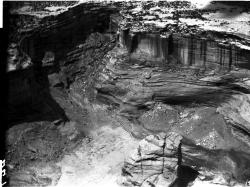
Standing Rock
Standing Rock in Canyon del Muerto. An archaeological site dating between AD 1100 and 1300 is visible on the lower bench of Standing Rock, closest to the viewer. A circular arrangement of plants in a Navajo field, visible to the left of the rock, suggests that it was an orchard or, less likely, that a center-pivot irrigation system was used there. Photograph by Charles A. and Anne Morrow Lindbergh, 1929.
For the first time in Oblique Views: Archaeology, Photography, and Time, large prints of Heisey’s stunning images will be paired directly with the Lindberghs’. The exhibition opens October 25, 2015 and runs through May 7, 2017 at the Museum of Indian Arts and Culture.
During 2007 and 2008, flying at alarmingly low altitudes and slow speeds, Adriel Heisey leaned out the door of his light plane, and holding his camera with both hands, re-photographed some of the Southwest’s most significant archaeological sites that Charles Lindbergh and his new bride Anne photographed in 1929.
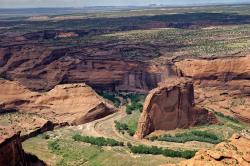
White House
White House is harder to see now because of the additional vegetation. This is the only site in Canyon de Chelly that is accessible without a guide and is by far the most visited ruin in the canyon. A hiking trail leads to the site from a parking lot on the rim above. A pedestrian bridge over the wash can be seen, as can the hiking trail. Tour trucks and jeeps park at the ruin-end of the bridge, although they ford the wash rather than crossing the bridge. Even outside the wash, plant growth is lusher today, in part because the site is not being grazed as intensively as it was in 1929. Photograph by Adriel Heisey, 2008.
